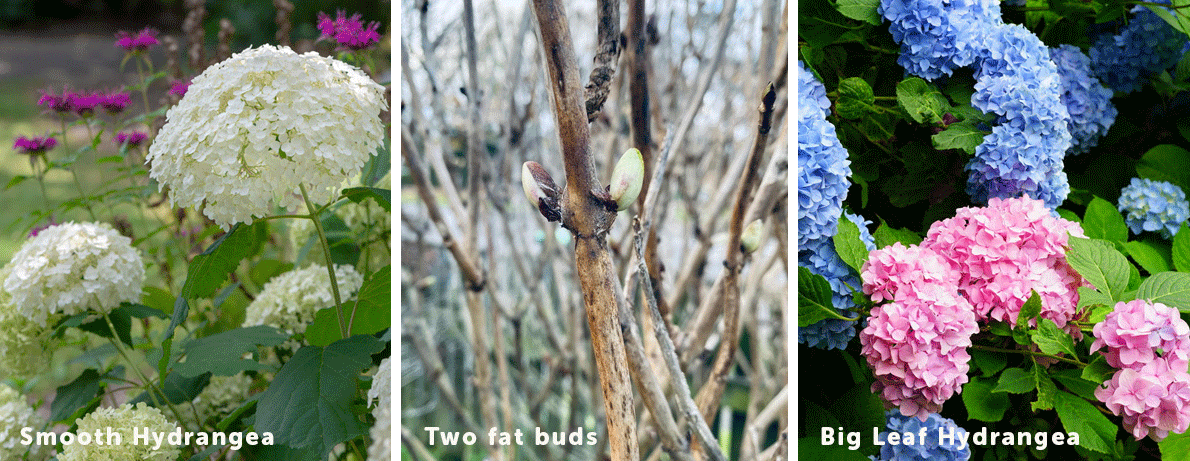Posted by Kelly Jean Reyland
9th Jul 2024
How to identify & prune your hydrangeas

Hydrangeas are the shrub that can always be relied upon to put on a good show in part – full shade positions. In the past we were limited to the standard ‘mop top’ or ‘lace cap’ varieties but we now have more varieties available to us such as Oakleaf, Panicle, Smooth and climbing options.
It is important to correctly identify what variety of Hydrangea you are pruning. This will guide you how and when to prune your variety correctly as different varieties are pruned at different times and if you get it wrong, you may miss out on blooms that year.
First things first; when pruning always start by removing any branches that are dead, damaged or diseased branches.
Bigleaf Hydrangeas
‘Mop top’ flowers (Bridal Bouquet’, ‘Raspberry Crush’ etc. ) and serrata with ‘lace cap’ flowers ‘Blue Deckle’ and “Libelle’ are some of the cultivars available.
Flower buds form the previous growing season, at or near the ends of the branches – easily recognisable as ‘two fat buds’ on the stems in late winter. If you cut back beyond them, you will forfeit your blooms for the upcoming summer. In areas with harsh winters, leave the old flower heads on the bush to protect the fat buds from the winter cold. Prune in spring, cutting the stems back to just above the ‘two fat buds’.
If you need to bring the height of the bush down, you will need to prune in late summer well before next years flower buds have formed on the stems. You may have to sacrifice some blooms to make the cuts.
If the bush is getting crowded, thin out some of the excess twiggy branches to let air and light into the bush.
Oakleaf Hydrangeas
‘Pee wee’ and ‘Snowflake’ are some of the cultivars available.
Grown for their stunning large red, oakleaf shaped leaves as much as the white panicle flowers. Prune the same way as the bigleaf hydrangeas back to ‘two fat buds’ unless you are more interested in the foliage, in which case cut the stems back one quarter in late spring to stimulate leafy growth and forfeit the flowers.

Panicle Hydrangeas
‘Limelight’, ‘Candlelight’ and ‘Bombshell’ are some cultivars available.
These varieties bloom on new seasons growth so prune in late winter-early spring, between the last heavy frosts and before it starts to shoot new growth. The buds should be swelling so you can tell if any have died during the winter and need removing. Cut back each stem by about one third, to just above a ‘node’ - where the buds swell and form. Trim out any weak, wispy growth to focus the plants energy into the bigger branches for a stronger plant and better show of blooms.
Smooth Hydrangeas
Such as ‘Annabelle’. These also flower on new seasons growth, so follow the steps for pruning panicle hydrangeas above.
Climbing Hydrangeas
‘Petiolaris’ climbs by attaching itself onto a support structure or wall. Prune in early spring before growth begins. Cut back overly vigorous branches and shorten flowering stems that are growing outwards from the support structure. The vine flowers on new shoots so light pruning to stimulate growth is beneficial for more blooms.
Pruning your hydrangeas will encourage blooms and improve the health of the plant by removing dead or diseased branches. It will enable you to control the overall shape and size of the plant, keeping it happy and healthy.
Shop Pruners & Secateurs
Written for Gubba by Kelly Jean Reyland from Garden Advice NZ (www.gardenadvice.co.nz)


























